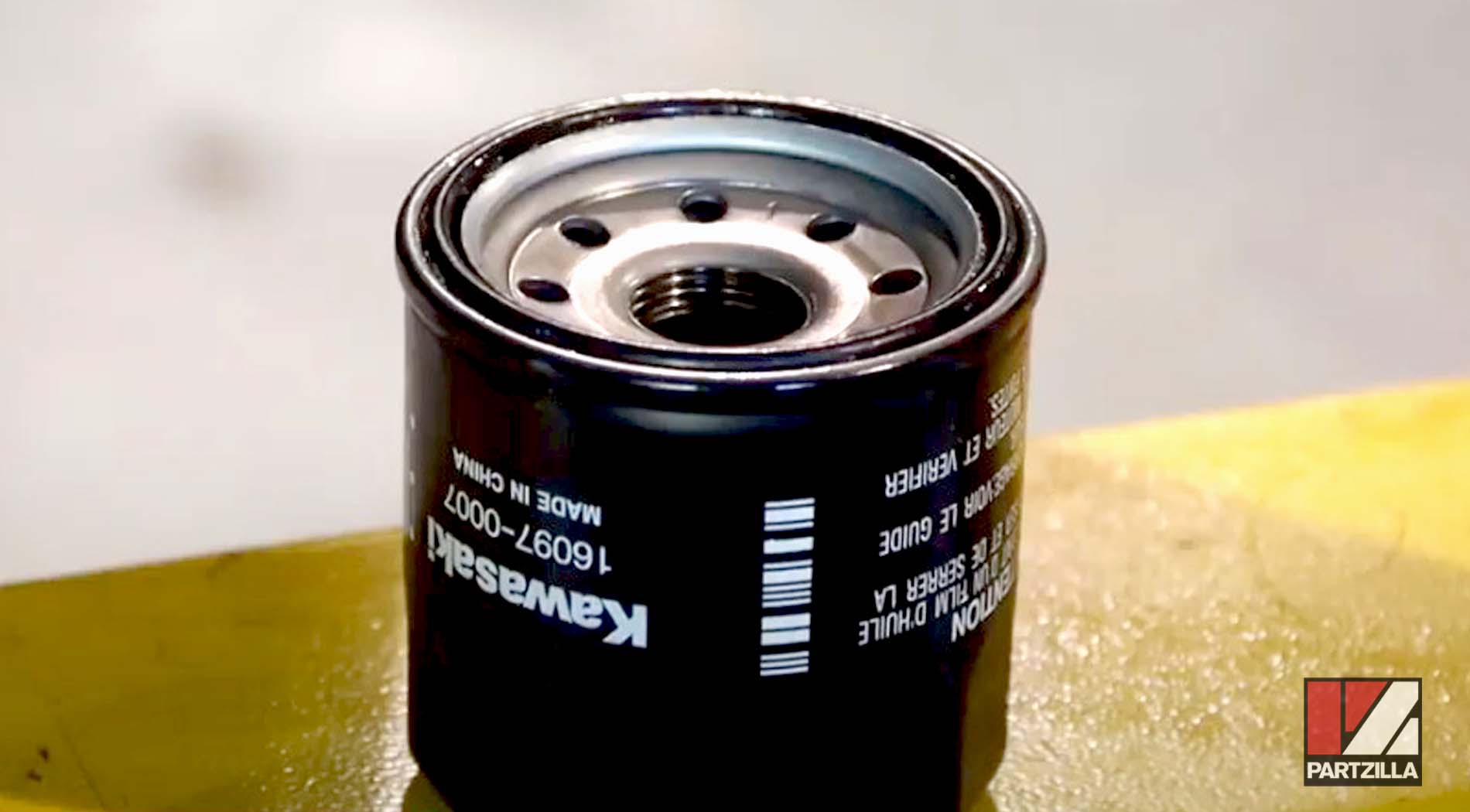How to Clean a Oil Filter
To clean an oil filter, remove it, wash with solvent, air dry, and reinstall for optimal performance. Cleaning your oil filter is crucial for maintaining your vehicle’s engine health and performance.
Proper maintenance ensures that contaminants are efficiently removed, allowing clean oil to flow smoothly through the engine and prolonging its lifespan. By following a few simple steps, you can keep your oil filter in top condition and avoid potential engine damage.
This guide will provide you with easy-to-follow instructions on how to effectively clean your oil filter and keep your vehicle running smoothly. Regular maintenance and cleaning of your oil filter are essential for preventing buildup and ensuring peak engine performance.

Credit: m.youtube.com
Choosing The Right Cleaning Method
When it comes to cleaning your oil filter, choosing the right cleaning method is crucial to ensuring its effective performance. There are various methods for cleaning an oil filter, and selecting the appropriate one can significantly impact the results. Below, we’ll explore the essential cleaning methods and how to execute them properly.
Degreasing The Filter
Degreasing the oil filter is a fundamental part of the cleaning process. To effectively degrease the filter, use a specialized degreaser designed for oil filters. Spray the degreaser liberally onto the filter, ensuring thorough coverage. Allow it to sit for a few minutes to break down the accumulated oil and grime. Afterward, use a soft-bristled brush or a pressure washer with low pressure to gently scrub the filter, focusing on areas with the most buildup. Rinse the filter thoroughly with water to remove any remaining degreaser and contaminants.
Soaking The Filter
Soaking the filter is another effective cleaning method that can help to dislodge stubborn deposits from the filter media. Fill a container with a suitable solvent or cleaning solution, ensuring it completely covers the filter. Allow the filter to soak for the recommended time specified by the solvent manufacturer, typically a few hours or overnight. During this time, the solvent will penetrate the filter, loosening and dissolving the trapped contaminants. After soaking, rinse the filter with clean water to remove any residual solvent and debris.

Credit: www.partzilla.com
Preparing The Filter For Cleaning
Before cleaning an oil filter, it is crucial to prepare it properly by following a few key steps. Proper preparation ensures thorough cleaning and maintains the filter’s efficiency.
Removing The Filter
Start by securely removing the oil filter from the vehicle using the appropriate tools to prevent any damage.
Allowing The Filter To Drain
After removal, allow the oil filter to drain completely for about 10-15 minutes to eliminate excess oil.
Cleaning The Filter
Cleaning the filter is crucial to maintain the efficiency and longevity of your oil filter.
Using A Cleaning Solution
1. Select a gentle cleaning solution such as a mixture of warm water and mild detergent.
2. Dip the filter into the cleaning solution and let it soak for a few minutes.
Brushing The Filter
1. Gently scrub the filter with a soft-bristled brush to remove any debris or buildup.
2. Ensure to reach all the crevices and corners for a thorough cleaning.
Rinsing And Drying The Filter
After the oil filter has been thoroughly cleaned with a suitable solvent, the next crucial step is to rinse off any remaining residue and ensure the filter is completely dry before reinstalling it. This process is essential in order to prevent any contaminants from compromising the filter’s performance and the engine’s health.
Rinsing Off The Cleaning Solution
Using a gentle stream of water, carefully rinse the filter to remove any traces of the cleaning solvent. Holding the filter at an angle can help ensure all residual debris is effectively washed away.
Inspect the filter during the rinsing process, ensuring that all remnants of the cleaning solution are completely removed. This step is crucial in preventing any potential chemical contamination in the engine.
Drying The Filter
Once thoroughly rinsed, allow the filter to air dry completely in a clean, dust-free environment. Ensure to leave sufficient time for the filter to dry naturally, as heat sources or compressed air can cause damage to the filter material.
Before reinstalling the filter, verify that it is completely dry to the touch, ensuring it is free from any moisture which could lead to potential engine damage.
Reinstalling The Filter
Reinstalling the oil filter is an essential step in the process of cleaning it. By following the proper instructions, you can ensure that the filter is securely in place and ready to function effectively.
Checking For Proper Alignment
Before tightening the oil filter, it is crucial to ensure that it is properly aligned. This step is essential to prevent any leaks and ensure that the filter functions effectively. To check for proper alignment:
- Inspect the mounting surface on the engine block for debris or old gasket material.
- Clean the surface with a lint-free cloth or a gasket scraper to ensure a clean and smooth mounting surface.
- Take the new oil filter and compare it to the old one to ensure they are the same size and have the same thread pitch.
- Place the new filter on the mounting surface and hand tighten it clockwise until it touches the surface.
- Rotate the filter an additional three-quarters to one full turn by hand to ensure a proper seal.
Tightening The Filter
Once the filter is properly aligned, it is time to tighten it securely. Follow these steps to ensure a tight fit:
- Using an oil filter wrench or a filter socket, tighten the filter clockwise until it is snug against the mounting surface.
- Avoid over-tightening, as it can damage the filter or the mounting surface.
- If you are unsure about the tightness, refer to the instructions provided with the filter or consult the vehicle’s manual for the recommended torque specifications.
- Once the filter is properly tightened, wipe off any excess oil or residue from the filter and surrounding areas using a clean cloth.
By following these steps, you can successfully reinstall the oil filter and ensure it is properly aligned and tightened. Remember to exercise caution and refer to the vehicle’s manual for any specific instructions related to your vehicle model. Proper installation of the oil filter can help maintain engine performance and extend its lifespan.

Credit: www.reddit.com
Frequently Asked Questions Of How To Clean A Oil Filter
What Can I Use To Clean An Oil Filter?
You can clean an oil filter using a degreaser and warm water. Soak the filter in the degreaser, then rinse it thoroughly with warm water. Let it air dry before reinstalling. Regular cleaning can extend the life of the filter and maintain engine performance.
Can I Clean Oil Filter With Brake Cleaner?
Yes, you can clean an oil filter with brake cleaner. It helps remove dirt and grime effectively.
Can You Clean A Oil Filter With Gasoline?
No, cleaning an oil filter with gasoline is not recommended as it can be hazardous and ineffective.
How Do You Clean A Car Filter?
To clean a car filter, first open the air filter housing. Then, remove the dirty filter and gently tap off loose debris. Next, use compressed air or a vacuum to remove remaining dirt. Finally, gently wash the filter with warm, soapy water and let it dry completely before re-installing.
How Often Should You Clean An Oil Filter?
You should clean your oil filter every 3,000 to 5,000 miles or as recommended by the manufacturer.
What Are The Benefits Of Cleaning An Oil Filter?
Cleaning an oil filter improves engine performance, extends oil life, and reduces the risk of engine damage.
What Is The Best Way To Clean An Oil Filter?
The best way to clean an oil filter is to remove it from the engine, soak it in a degreaser, rinse it thoroughly, and let it dry before reinstalling.
Conclusion
To sum up, cleaning your oil filter is an essential part of maintaining your vehicle’s health. Regular maintenance ensures that your engine operates efficiently and lasts longer. By following the steps outlined you can save money on costly repairs and keep your vehicle running smoothly.
Stay proactive and prioritize the cleanliness of your oil filter to ensure optimal performance.
